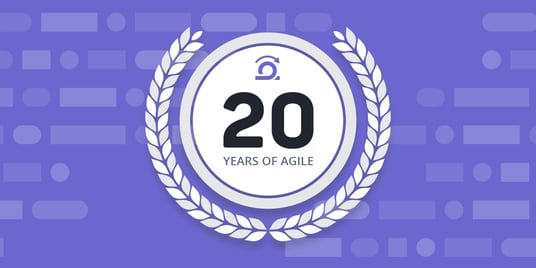Get a Free Trial
Creating, executing, and maintaining reliable tests has never been easier.
February 2021 marks the 20th anniversary of the Agile Manifesto, which launched the development of advanced software engineering practices centered around people, collaboration, and supportive work communities. At the time, the agile movement offered a stark - even radical - approach to the documentation-driven software development processes that dominated the burgeoning technology industry. But two decades later, it’s clear that the Agile Manifesto was laying the groundwork for the growth and innovation that contemporary software development demands.
At mabl, we’re proud to support high-velocity agile teams building the most cutting-edge software in financial services, enterprise technology, energy, insurance, e-commerce, and more. As a growing number of software development organizations recognize the power of agile, mabl strives to be a partner throughout the adoption, implementation, and continued support phases, all the while helping QA and QE teams ensure a culture of quality.
To celebrate and reflect on twenty years of agile, we asked the mabl team for their thoughts on the once-radical movement:
Dan Belcher, Co-Founder
As I re-read the manifesto, I’m once again struck by its power and simplicity. I was early in my career when agile started to gain traction and remember how radical and complicated the ideas seemed at the time as they called into question so much of what we had been taught about software development: Isn’t my job to write clear specifications? Isn’t an engineer’s job to build to the specifications? If requirements change, doesn’t that mean that I was wrong? How will we know if we’re ahead or behind if we don’t schedule the entire project in advance?
Now I think of the millions of years of human effort that have been saved by spending less time over-specifying and over-documenting, by building code that nobody was ever going to use, by reducing the complexity of integration, by collaborating more and blaming less, and so much more. I also think about the other movements, including DevOps, that are inspired if not derived from these Agile principles. Finally, I wonder--what’s next? If we started with the Waterfall Era and have proceeded to the Agile Era, is this the end of our evolution in approaches to software development or is there another radical shift waiting just around the corner?
Eugene Krylov, Software Engineer
One of the most powerful things about agile is that we continue to look for new and better ways of delivering value to our customers. There is no end state, it’s never finished. We saw the evolution of focus from purely technical practices to team communication and dynamics, to the integration with operations (DevOps), to business strategy (Lean startup ideas).
We’ve seen a lot of frameworks materialize around agile. Many of them provide a set of very specific blueprints of how to DO agile, but don’t spend nearly enough time on underlying principles of BEING agile. We need to continue revisiting underlying agile values and promote them within our organizations.
It also happens to be the only humane way to work. We encourage teams to self-organize, give them a mission and let them figure out a way to accomplish it. Autonomy and purpose are two key motivators. Managers and leaders are there to support the teams, not micromanage.
Lastly, we have incredible tools at our disposal to enable innovation and experimentation. Cloud vendors enable us to deploy machine learning models, voice and image recognition, language processing, and other sophisticated capabilities with just a few clicks. Something that 10 years ago required months of studies and dozens of request tickets can now be hypothesized, validated, and deployed in 24 hours.
Geoff Cooney, Software Engineer
When people talk about agile, the first things that come to mind are the Agile Manifesto or the frameworks it has spawned. But to me, the most powerful part of the agile movement is the core principles behind those things. Those principles have shaped the way I approach every aspect of building software. As an engineering leader, making the shift from "how can I make sure the team does X right" to "how do I make sure the team has the tools and experience to accomplish X" is transformative and has enabled me to spend more time focusing on the things where I can truly add incremental value. And as an engineer building product, driving to deliver something to a customer as rapidly as we can and maximizing simplicity while still focusing on good, extensible design have become such fundamental parts of how we operate it's hard to imagine a process where they aren't. Agile has moved from a transformative mindset to the default methodology.
Are you a quality leader at an agile organization? Sign up for a free trial of mabl today!






